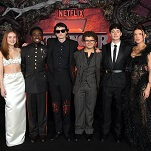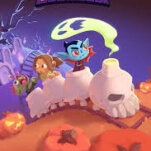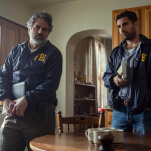Readers try to define the perfect balance for freedom in puzzle games
Puzzle & Players
This week, we dipped back into 2014 with a review of The Talos Principle, a puzzle game from the Serious Sam developers at Croteam. Anthony John Agnello was way into its combination of spatial challenges and existential provocation. His only minor gripe was that Principle’s puzzles lack room for improvisation compared to Portal, one of its chief influences. Needlehacksaw pointed out that Portal’s sequel suffered from the same problem, and that if handled well, it’s not a problem at all:
I’m not sure the rigidness of the puzzles should be held against Talos, though. Puzzle games that give the player a real option to improvise solutions not foreseen by the developers are extremely rare—I guess developers are a bit afraid of players breaking their game—and the few exceptions, like SpaceChem, are sometimes so complex that they seem downright intimidating. Duncan Fyfe might have been on to something when he once described the rigid but brilliant Braid like this: “Braid creates circumstances which facilitate feelings of momentary genius. Playing Braid, I relate to high school dorks who select steroid-abusing vigilantes as their in-game avatars, except I am role-playing as a smart person.” It’s role-playing alright. The dopamine rush you get when you find a puzzle’s solution is, to some degree, a mere illusion. You’re not a genius. You just did what a smarter-than-you developer wanted you to do. But guess what? The dopamine rush is no illusion. The fact that you stretched your brain in new directions isn’t one, either. Rigid puzzles? They’re alright with me, if they are done well, as they seem to be in Talos.
Other commenters agreed: It’s just as valuable for a puzzle game to subtly lead players to its single solution. zebbart recalled the developers of Portal saying the same thing:
Playing Portal with the commentary track on illustrates just how true that is. Sometimes people would find alternative solutions that were way too simple and allowed them to basically skip the level, missing all the fun. Other times people completely missed the technique that would lead to the solution and quit in frustration. In both cases, the developers had to come up with subtle nudges to get the players to “do it right” without feeling forced.
And duwease pointed out another big design problem posed by open-ended puzzles:
I think, even more than developers being afraid of someone breaking their game, developers have to limit options in order to introduce challenge. Open-ended puzzles are fine at the beginning, but they eventually result in repeated solutions unless you introduce some limiters to push players in another direction. Look at how open Scribblenauts is. They’re not even really puzzles at that point, you just have a little fun challenging yourself to find the weirdest solution by the end.
The games that get around that (SpaceChem, as needlehacksaw mentioned, the recent gem Prelogate, and any CCG) generally give the players such a complex set of tools that the fun takes place outside of the game, over to brainstorming on forums as to how best “solve” the game in general. That’s fun for the dedicated players but probably not the best route for a story-based game.
Cartlon Hungus agreed and provided an example:







































